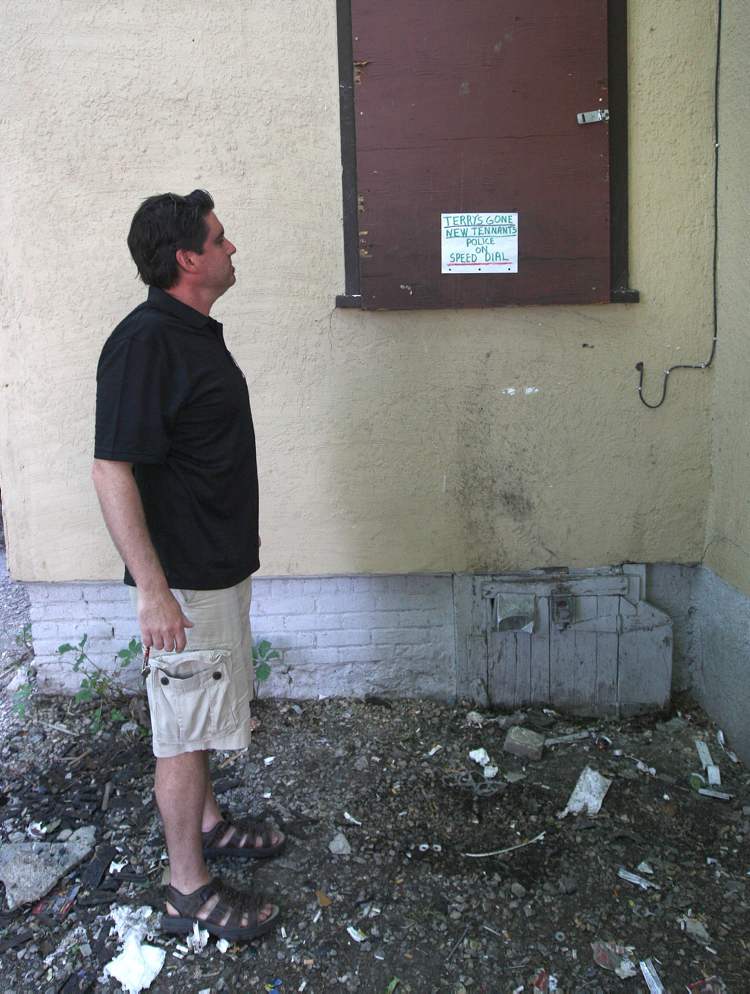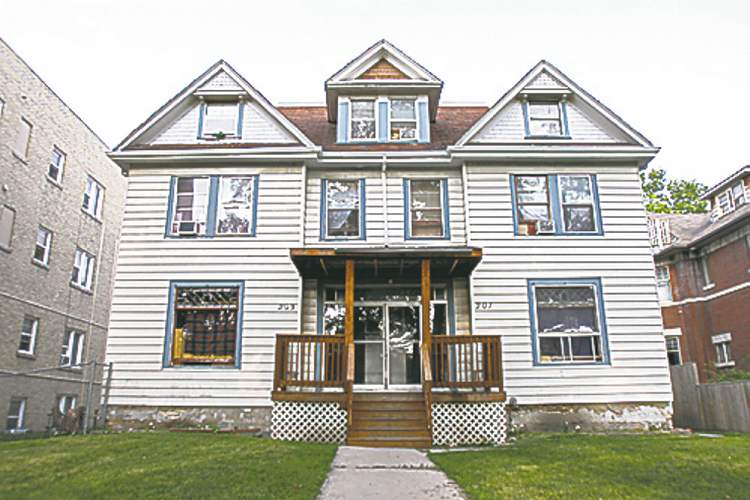Owner won’t convert huge rooming house
Advertisement
Read this article for free:
or
Already have an account? Log in here »
To continue reading, please subscribe:
Monthly Digital Subscription
$1 per week for 24 weeks*
- Enjoy unlimited reading on winnipegfreepress.com
- Read the E-Edition, our digital replica newspaper
- Access News Break, our award-winning app
- Play interactive puzzles
*Billed as $4.00 plus GST every four weeks. After 24 weeks, price increases to the regular rate of $19.00 plus GST every four weeks. Offer available to new and qualified returning subscribers only. Cancel any time.
Monthly Digital Subscription
$4.75/week*
- Enjoy unlimited reading on winnipegfreepress.com
- Read the E-Edition, our digital replica newspaper
- Access News Break, our award-winning app
- Play interactive puzzles
*Billed as $19 plus GST every four weeks. Cancel any time.
To continue reading, please subscribe:
Add Winnipeg Free Press access to your Brandon Sun subscription for only
$1 for the first 4 weeks*
*$1 will be added to your next bill. After your 4 weeks access is complete your rate will increase by $0.00 a X percent off the regular rate.
Read unlimited articles for free today:
or
Already have an account? Log in here »
Hey there, time traveller!
This article was published 16/07/2013 (4463 days ago), so information in it may no longer be current.
Winnipeg lawyer Richard Fulham owns what could be the biggest rooming house in Winnipeg.
At a whopping 27 rooms, the Furby Street house dwarfs many apartment blocks in West Broadway. For local housing activists, it’s a niggling worry that Fulham might one day flip the house, putting two dozen people on the street.
A decade ago, Fulham owned 11 rooming houses in West Broadway but slowly sold some as part of the gentrification that’s now begun in the neighbourhood and because stagnant welfare rates can make running a rooming house a losing proposition. Fulham originally planned to convert the Furby Street house into 12 bachelor units, and he still gets offers to buy the property.

He is not selling.
“I was going to convert them all, but there’s such a need for housing,” said Fulham, who also owns two smaller rooming houses nearby. “Where would these people go?”
Instead, he is working on upgrading the Furby house and should have it where he wants it in a year.
Rooming-house owners are a varied bunch. Many are slum landlords, so negligent it’s hard even for seasoned fire inspectors to track them down. Others are neighbourhood agencies looking to fight poverty by running decent suites. Still others see rooming houses as the affordable way to get into the real estate game, unprepared for the social work involved and frustrated by government regulations and programs that routinely fail rooming houses and their residents.
If nearby Spence neighbourhood is any barometer, there is no one big, bad rooming-house owner in Winnipeg. An analysis of the ownership of 117 rooming houses in Spence — building on data collected by the University of Winnipeg’s Institute of Urban Studies — suggests three-quarters of landlords own only one or two properties. And virtually none is owned by out-of-towners, as once rumoured.
It can be difficult to reach rooming-house owners, even ones with good reputations. One couple, Richard and Susan Kathler, appears to own nine rooming houses in Spence but did not return calls for comment.
‘I was going to convert them all, but there’s such a need for housing. Where would these people go?’
— rooming-house owner Richard Fulham, a lawyer
Some of the challenges rooming-house landlords face include finding a decent caretaker with the right combination of patience and power to enforce house rules, and properly vetting tenants so the bad seeds don’t take root. It’s also a constant battle against bedbugs, as tenants may be transient or have guests that bring in unwanted insects.
Fulham and other owners say coping with landlord-tenant rules that are simply not designed for the realities of a rooming house is another problem.
Steve Tait, who owns a 15-room house up the street from Fulham’s, says the sprinkling of government programs meant to help rooming houses function simply don’t work at street level.
It can be remarkably hard to evict a problem tenant. Most need to be waited out until they disappear, such as the drug dealer who recently set up shop on the main floor of Tait’s house. The dealer finally left to work up north in a fishing lodge and the new tenant in the room has posted a sign on her door alerting the dealer’s old customers that the cops are on speed-dial. That sign is also posted outside on the back window, which the dealer used as a drug drive-thru.
For Tait, the province’s much lauded Safer Communities and Neighbourhoods Act has also failed three times to help him get rid of troublemaking tenants, and navigating the province’s renovation-grant program wasn’t much easier. He is one of just three rooming-house owners in six years to win cash as part of the Residential Rehabilitation Assistance Program, a process he said took 18 months, 10 meetings and a call to the housing minister. In Spence, housing advocates do a polite eye-roll at the 40-odd-page application form.
For all the hassles of owning a rooming house, Fulham chafes at the demonization of his tenants, many of whom are excellent, including a gentleman who has lived in Fulham’s Langside Street rooming house for years.

“I’ve learned that everyone has a little story. They’re not all problematic,” said Fulham. “Just because people are in these units doesn’t mean they’re all transient. They’re just poor.”
maryagnes.welch@freepress.mb.ca
History
Updated on Tuesday, July 16, 2013 6:45 AM CDT: Fixes headline, adds fact box, replaces photo








